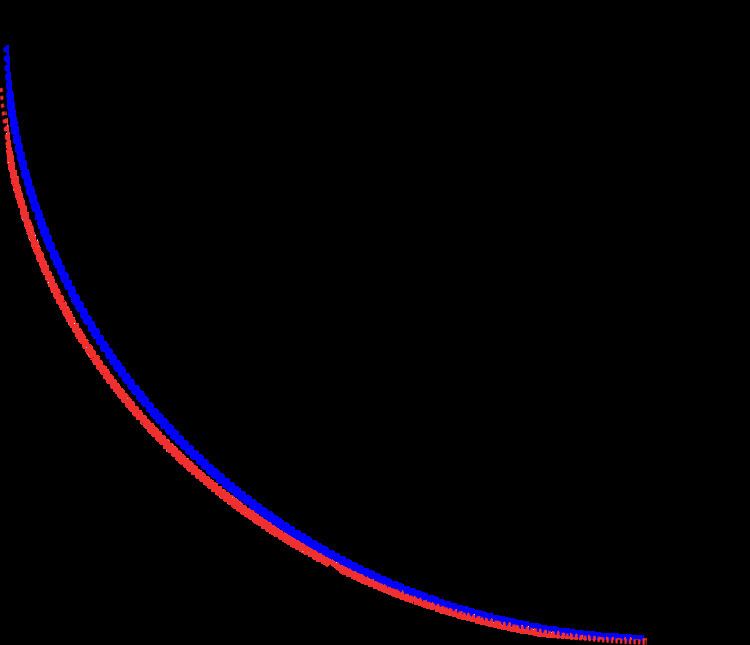 | ||
In mathematics, a series is the sum of the terms of an infinite sequence of numbers.
Contents
- Examples of convergent and divergent series
- Convergence tests
- Conditional and absolute convergence
- Uniform convergence
- Cauchy convergence criterion
- References
Given an infinite sequence
A series is convergent if the sequence of its partial sums
If the series is convergent, the number
Any series that is not convergent is said to be divergent.
Examples of convergent and divergent series
Convergence tests
There are a number of methods of determining whether a series converges or diverges.
Comparison test. The terms of the sequence
for all n,
However, if,
for all n,
Ratio test. Assume that for all n,
If r < 1, then the series converges. If r > 1, then the series diverges. If r = 1, the ratio test is inconclusive, and the series may converge or diverge.
Root test or nth root test. Suppose that the terms of the sequence in question are non-negative. Define r as follows:
If r < 1, then the series converges. If r > 1, then the series diverges. If r = 1, the root test is inconclusive, and the series may converge or diverge.
The ratio test and the root test are both based on comparison with a geometric series, and as such they work in similar situations. In fact, if the ratio test works (meaning that the limit exists and is not equal to 1) then so does the root test; the converse, however, is not true. The root test is therefore more generally applicable, but as a practical matter the limit is often difficult to compute for commonly seen types of series.
Integral test. The series can be compared to an integral to establish convergence or divergence. Let
then the series converges. But if the integral diverges, then the series does so as well.
Limit comparison test. If
Alternating series test. Also known as the Leibniz criterion, the alternating series test states that for an alternating series of the form
Cauchy condensation test. If
Dirichlet's test
Abel's test
Raabe's test
Conditional and absolute convergence
For any sequence
This means that if
If the series
If the series
The Riemann series theorem states that if a series converges conditionally, it is possible to rearrange the terms of the series in such a way that the series converges to any value, or even diverges.
Uniform convergence
Let
converges uniformly to f.
There is an analogue of the comparison test for infinite series of functions called the Weierstrass M-test.
Cauchy convergence criterion
The Cauchy convergence criterion states that a series
converges if and only if the sequence of partial sums is a Cauchy sequence. This means that for every
which is equivalent to
